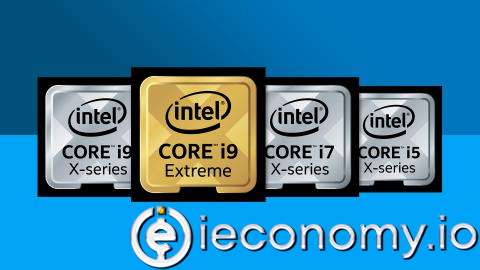7514
0
Could Intel Have a Trillion Dollar Stock by 2030?
Could Intel Have a Trillion Dollar Stock by 2030? Could Intel Have a Trillion Dollar Stock by 2030? Could Intel Have a Trillion Dollar StocK

Yazar: Ross Sutton
Yayınlanma: 24 Ağustos 2021 17:41
Güncellenme: 5 Aralık 2025 05:22
Could Intel Have a Trillion Dollar Stock by 2030?
Could Intel Have a Trillion Dollar Stock by 2030? This valuation is not as far off target as it seems. Although Intel INTC (NASDAQ) $53,38 +0,15 (+%0,28) has shown no signs of moving towards a $1 trillion market cap in recent years, as a technical leader in years of stagnant revenue and loss, this tech giant has come to the fore, surpassing PC-era peers like Microsoft, Nvidia, and even Advanced Micro Devices AMD (NASDAQ) $108,32 -0,45 (-%0,41) CEO Pat Gelsinger initiated changes to the Company that could reveal many new lines of business.Although there are many obstacles to be overcome, a market value of 1 trillion dollars can be reached
The interesting thing is that the Company's market value is not as far-fetched as one might think. The current market value of 220 billion dollars means that it needs to increase its stock price by an average of 18% annually in order to reach 1 trillion dollars in 9 years. Other than a brief sales boost during the pandemic, the company, which has struggled for years to deliver meaningful revenue growth, has no reason why it shouldn't reach the projected number. In addition, the company has continued to struggle since the slowing rate of development in the early 2010s, It also allowed long-time rival AMD to gain technical leadership under the leadership of CEO Lisa Su.Business lines that can increase to 1 trillion dollars
Despite these challenges, at the Intel Accelerated event on July 26, Gelsinger outlined a plan that could cause problems for Intel's colleagues. He stated that he aims to catch up with Taiwan Semiconductor Manufacturing (NYSE:TSM) and Samsung technologically by 2024 and regain technical leadership by 2025.Could Intel Have a Trillion Dollar Stock by 2030?
The Ceo Gelsinger got the support he sought when the U.S. Senate passed a bill that included a $39 billion subsidy to build new factories, thanks to many politicians in Washington and the funds he needed to regain leadership. Gelsinger has also done much to revive Intel's foundries by investing in Arizona and New Mexico. Thus, Intel Foundry Services also announced that it has hired Amazon's AWS as its first customer. In this case, it has put the situation of its competitors, which do not have their own chip manufacturing factories, into a difficult situation. (like AMD and Apple). If these businesses help Intel increase its earnings and increase its P/E ratio, it may be possible to reach a market cap of $1 trillion by 2030 with its chip stock.Source: The Motley Fool
You may also be interested in:
GM announced that all Bolt EV models must now be recalled
İLGİLİ HABERLER





European stocks soared and focus shifted to German retail sales after Powell's speech!

Forex Signal For TRY/USD: Inflation Slowdown in November.

Forex Signal For GBP/USD: Bullish Trend Still Not Breaking While Recovery Continues.

Forex Signal For EUR/USD: Starry US Data Points to Higher Fed Increases.

Forex Signal For BTC/USD: Downside Continues as Bitcoin Recovery Moves Less.
En Popüler Haberler
Yorum Yap
Yorumlar
Henüz yorum yapan yok! İlk yorumu siz yapın...